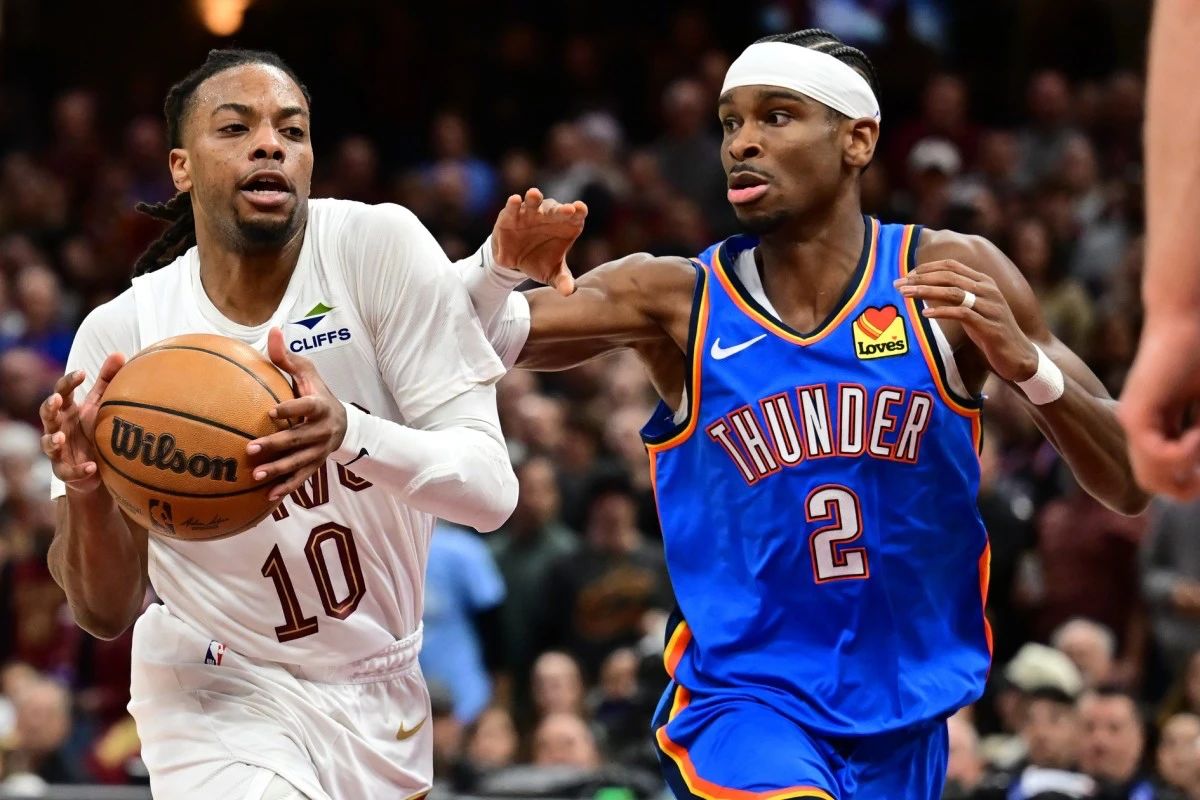With the Thunder on a 15-game win streak and the Cavaliers on a 10-game tear, their showdown as top dogs in each conference should’ve been a sellout spectacle. Yet when Cleveland beat Oklahoma City 129-122, the hype didn’t match the historic stakes. Why? Neither team is a media darling.
In NBA history, this was just the second time two 30+ win teams met in the regular season—and the third time two teams on double-digit win streaks clashed. The last such matchup? Thirty years ago.
The game lived up to the billing, showcasing the NBA’s new-era pinnacle: 30 lead changes, 35 Thunder assists vs. 36 for Cleveland. Neither team chucked threes recklessly (OKC: 11-of-31 from deep; CLE: 15-of-36). They dominated the paint (60-54 Cavs edge) and transition (20-14 Thunder lead).
OKC’s 35 assists tied their season high (they’ve only had 6 games with 30+ assists all year), while Cleveland’s 36 assists ranked 4th among their 16 such games this season. Smooth, beautiful basketball—truly a game for the ages.
Box score nitpickers could blame OKC’s 1 fewer assist, 3 fewer rebounds, lower three-point percentage, or missed layups. But the real culprit? Cleveland’s zone defense.
All game, the Thunder clawed back from 2-3 possession deficits, even taking leads. Then, in the final half-quarter, Cleveland dropped into a zone. Eastern Conference teams like the Cavs and Heat, plus Mavericks and Clippers, love using zones effectively. Cleveland can do this because bigs like Jarrett Allen and Evan Mobley can guard out to the arc and stay with guards on drives.
In the last 6 minutes, Shai Gilgeous-Alexander—who’d been nailing mid-range jumpers all night—suddenly couldn’t penetrate. His Achilles’ heel? Three-point shooting (1-of-6 on the night), so he had to dish. With OKC trailing by 2 after cutting a 7-point deficit, their offense stalled: just 10 points over those final 6 minutes.
In the NBA, the best ways to break a zone are pace or three-pointers. But the Thunder barely fired from deep in the clutch—until Jalen Williams hoisted a desperation triple with 20 seconds left, down 7.
Aside from his shooting, SGA was sensational: 12-of-21 from two, 31 points total, hitting vintage mid-range daggers. Donovan Mitchell, targeted by OKC’s defense, struggled (3-of-16, 11 points). But Cleveland’s bench delivered: Max Strus (5-of-6 from deep, 17 points) and Ty Jerome (15 points on D and transition) led a 43-26 bench scoring rout.
The loss doesn’t dent OKC’s Western Conference stranglehold—they still lead Houston by 6 games. Cleveland, meanwhile, extended their Eastern Conference buffer to 5.5 games over Boston. Two dominant teams in both conferences? Rare in league history.
Their strengths differ: Cleveland ranks 2nd in scoring, 11th in defense; OKC is 1st in points allowed, 10th in scoring. Structurally, they mirror each other: Cavs have Allen-Mobley “twin towers,” Thunder have Chet Holmgren (out injured here)-Jalen Harrell “bigs”; both sport backcourt duos (Mitchell-Garland vs. SGA-Williams) and deep benches (OKC missed Alex Caruso).
OKC’s Achilles’ heel? Offensive firepower, especially from deep—neither volume nor efficiency. Cleveland, near-perfect otherwise, face a playoff red flag: Their switchable bigs and zone thrive vs. most teams, but against a Celtics-style three-point barrage, zones crumble. This season, CLE beat BOS recently (both made 17 threes) but lost the first meeting (Cavs 10 threes, Celtics 22). In a 7-game series, Boston needs 4 hot shooting nights to crack Cleveland’s D—and that’s doable.
